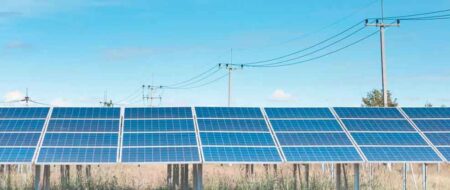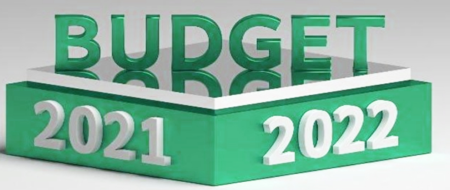Pakistan at IMF Door Again
Policy Perspectives , Volume6 , Number1, January – June 2009
Abstract
[That Pakistan was forced to seek IMF assistance once again has proved that the claims of breaking the begging bowl by previous regime were unfounded and economic fundamentals remain weak and vulnerable to external shocks. The agenda in Fund’s pervious arrangements for Pakistan has never been painless – being more financial and commercial than human. Besides, IMF support arrangements do not promote self reliance and may increase the fragility of the economy. The conditionality attached with the latest Stand-by Arrangement has both positive and negative implications. It is, however, mainly a financial package aimed at short-term stabilisation rather than a plan for economic and social development. A cautious approach for Pakistan is needed to ensure stability and growth, taking bold and futuristic steps to avert financial slide, particularly regarding forex reserves and fiscal and external deficits that force to seek the IMF support. – Ed.]
Introduction
After a four-year gap Pakistan has once again come under the IMF support arrangement by concluding a twenty-three month Stand-By Arrangement (SBA) of SDR 5.17 billion ($ 7.6 billion) on 24 November, 2008. The earlier Poverty Reduction and Growth Facility (PRGF) Arrangement had ended in December 2004 with proclamation by the authorities that they had broken the ‘beggar’s-bowl’ and that their policies had brought the economy to a position where IMF support would no more be required. What happened that led the country to knock at the door of the IMF once again, at what cost the support has been obtained, and is this support a ‘one-time-shot-in-the-arm’ or a-long-term ‘drip-in-the vein’ are some of the questions that this paper is intended to address.
Background
Established in 1944, the International Monetary Fund (IMF) was responsible for promoting exchange rate stability and providing temporary assistance (under Stand-By Arrangement) to a member state facing short-term balance of payments difficulty. Realising that short-term assistance is not sufficient to address the specific difficulties, such as emergent situations and structural weaknesses; the Fund introduced new support facilities (i.e. SAF, ESAF, EFF and PRGF) of medium-term nature. A member using IMF resources under these arrangements is required to agree on a reforms and stabilisation program with the Fund. Disbursement of resources is linked with the conditionality laid down by the IMF.
Overview of Earlier Arrangements
Pakistan is one of the ‘prolonged users’ of the IMF resources; it remained under the IMF support program for over twenty-five years – almost continuously during 1988 and 2004 (the new Arrangement adds two more years). The eight medium-term arrangements concluded during 1980 and 2004 are listed in table 1.
Table 1
IMF Support Arrangements to Pakistan
(1980-2004)
|
Arrangement |
Date of Arrangement (expiration) |
Amount (SDR million) |
Disbursement (SDR million) |
Signed during rule of |
|
EFF |
24-11-80 (23-11-83) |
1268.00 |
1079.00 |
Ziaul Haq |
|
SBA |
28-12-88 (7-3-90) |
273.15 |
194.48 |
Benazir Bhutto |
|
SAF |
28-12-88 (27-12-91) |
382.41 |
382.41 |
Benazir Bhutto |
|
SBA
EFF/
ESAF |
16-9-93 (15-9-94) 22-2-94 (21-2-97) 22-294 (21-2-97) |
265.40
379.10
606.60 |
88.00
123.20
172.20 |
Nawaz Sharif |
|
SBA |
13-12-95 (31-3-97) |
562.59 |
294.69 |
Benazir Bhutto |
|
EFF/ESAF |
20-10-97 (19-10-2000) |
454.92 682.38 |
113.75 265.37 |
Nawaz Sharif |
|
SBA |
29-11-2000 (30-9-2001) |
465.00 |
465.00 |
Pervez Musharraf |
|
PRGF |
7-12-2001 (5-12-2004) |
1033.70 |
861.42 |
Pervez Musharraf |
Source: IMF
The first six arrangements (1980-1998) terminated prematurely mainly due to non-compliance of some conditionality by Pakistan. The last two arrangements (i.e. SBA 2000 and PRGF 2001-04) were implemented successfully despite very severe conditions imposed by the IMF (i.e. under SBA 56 against average normal conditions of 19 and under PRGF 81 against 45 in similar arrangements with other countries during the period). Improved external position caused by debt relief arrangements, 9/11 related assistance, privatization proceeds and larger home remittances, led to Pakistan opting to forego the last tranche and terminate the PRGF Arrangement prior to December 2004. The broad objectives of the Arrangement were said to have been achieved. Economic growth revived; and fiscal deficit and external debt ratio reduced. Inflation came down to less than 4 percent in 2001-04 (re-emerging in later years and reaching 9 percent in 2005). Progress has been made in structural reforms especially in trade, interest rate management and capital account liberalization. In some areas the progress remained slow. Despite taxation reforms, the tax-GDP ratio remained at low level of 11 percent while the quasi-fiscal deficit caused by subsidies and lending to public utilities high (1% of GDP). Social indicators showed improvement, yet they remained far below the desired levels.
Factors Responsible for Seeking IMF Support Again
On completion of PRGF Arrangement the authorities claimed that they had broken the ‘beggar’s-bowl’ and in future IMF support will not be required. The statement was more rhetoric than reality. Firstly, the IMF set course was to be followed even after the conclusion of support Arrangements and its progress was watched under the annual Article IV consultation with the Fund. Secondly, many World Bank/Asian Development Bank assisted programs (like, financial sector and tax reforms) were designed to pursue the IMF course. Thirdly, though there was no support arrangement with IMF, the economy was more exposed to external development and continued to be heavily dependent on external resources. Thus, despite having no financial support arrangements during 2005-08, Pakistan was obliged to follow IMF laid down agenda.
A critical weakness of the IMF support arrangement is that it does not promote self reliance and increases the fragility of the economy. The adverse external developments inflict heavy toll on fragile economies like Pakistan. This happened in mid-2007 with surge in value of imports due to substantial rise in prices of oil and food items and global financial turmoil. Adverse security developments, political transition and inability of the government to take corrective and timely action to face emerging challenges exacerbated the situation. Consequently, the economy suffered – high inflation (25% by November 2008), rising fiscal deficit (7.4% of GDP 2008) and current account deficits (8.4% of GDP in 2008), flight of capital, slump in share market, dwindling foreign exchange reserves (from over $16 billion in December 2007 down to around $ 7 billion in early November 2008), depreciation of rupee (over 25% by November 2008), depressed growth (from 5.8% in 2008 down to 3.4%in 2009), and rising unemployment and poverty. The earlier government (Shaukat Aziz) was too complacent to see the coming decline, the caretaker government (Mohammadmian Soomro) too weak to take bold steps, and the present government (Gilani) too intoxicated with election success and blaming the former rulers to comprehend the seriousness of the situation. An economy which was claimed to be on high trajectory path in mid-2007 was at the verge of default in repayment of external debt in early 2008. Effort to mobilise external resources to meet payment obligations failed with prospective sources suggesting Pakistani authorities to first work out a satisfactory arrangement with the IMF before they make their commitment. Even regular installments of external loans and assistance were deferred. Pakistani authorities were left with no choice except knocking the door of the IMF once again.
Stand-By Arrangement (SBA) 2008-10
Main Features
Pakistan submitted to the IMF a Request for Stand-By Arrangement on 20 November, 2008 amounting SDR 5.17 billion ($ 7.6 billion) equal to 500% of Pakistan’s quota in the Fund. The Request was prepared jointly by Pakistani authorities and IMF Staff and approved by the Cabinet. The IMF Executive Board approved the Request on 24 November, 2008. The Arrangement is for a period of 23 months. It is on interest rate of 3.51-4.51%. The amount will be disbursed in seven tranches – the first tranche of SDR 2.067 billion has been received on 29 November, 2008 and the balance amount will be disbursed in six quarterly instalments during 2009-10. The amount and interest will be repaid in five years from 2011.
Objective and Economic Program (2009-2010)
The main objectives of the Arrangement are to (i) restore confidence of domestic and external investors by addressing macroeconomic imbalances through a tightening of fiscal and monetary policies; and (ii) protect the poor and preserve social stability through a well-targeted and adequately funded social safety net. For this purpose the government of Pakistan has initiated an Economic Program covering 24 months. The main elements of the Program are:
· Reduce fiscal deficit: 7.4% of GDP in 2008 to 4.2% in 2009 and 3.3% in 2010
· Tighten monetary policy (increase interest rate, eliminate government borrowing) to reduce inflation to 6% in 2010
· Increase expenditure on social safety net (0.6% of GDP to 0.9% in 2009) -work with World Bank to prepare a comprehensive program of safety net
Conditionality of SBA
The program is subject to quarterly review and performance criteria. The conditionality covers actions prior to the approval of arrangement by the IMF Board, performance criteria, benchmarks and quantitative targets. The prior actions included increasing the State Bank’s discount rate from 13% to15% as a measure to control inflation, raise in electricity tariff by an average of 18% effective from 5 September, 2008, and agreement on volume of quarterly issue of treasury bills for the remainder of second quarter of 2008/09. The performance criteria includes submission of amendments in two legislations (relating to enhancement of effectiveness of the State Bank and harmonisation of income and GST laws) in the Parliament by June 2009. The conditionality cover over half a dozen benchmarks – contingency plan for handling problems of private banks, reforms in tax administration, further adjustments in electricity tariffs, eliminating of foreign exchange provision by State Bank for import of furnace oil, measures for ensuring safety nets for poor, plan for elimination of inter-corporate circular debt, and transition to a single treasury account. Quarterly quantitative targets have been set which also include ceilings on overall budget deficit and borrowing of government from State Bank.
Evaluation of SBA 2008-10
The IMF arrangements can be seen from different perspectives – bail-out package, lubricant for larger resource inflows, investors’ confidence builder, economic stabiliser and revival of growth, step towards greater external dependence, and source of hardship to the people, and so on. This section is intended to focus on evaluating it in the context of the objectives of the Arrangement and as an instrument of long term economic and social development.
The Economic Program under SBA is restricted in scope as it only ‘seeks to restore the confidence of international and domestic investors while preserving social stability by protecting the poor’ (ref. Pakistan: Request for SBA). It is a financial stabilisation plan heavily dependent on tight monetary and fiscal policies. It ignores the key issues of revival of economic growth, social development and removal of structural weaknesses. It presumes that tight monetary and fiscal policies will ensure economic revival in later years.
Conditionality
The conditionality of SBA has both positive and negative implications. The elements relating to legislative amendments, tax reforms, safety nets, inter-corporate circular debt, ceilings on government borrowing are desirable. Legislative amendments may make the State Bank more effective and improve tax system. Inter-corporate circular debt in energy sector (i.e. oil/gas companies, WAPDA, KESC, Water Boards, government agencies, etc. are indebted to each other in millions of rupees) is serious issue lingering for years and needs to be resolved urgently Despite legislative provisions the government has been borrowing heavily from the State Bank and putting ceilings on such borrowings would help in ensuring financial discipline. The provisions of SBA on social safety net are, however, weak and too general.
As a bail-out package the Arrangement has served its purpose. The likely default situation has been averted; foreign exchange reserves have risen over $ 9 billion (equal to over two months of imports) on 29 November 2008 from less than $ 7 billion a week ago; and donor assistance is reportedly lined-up to meet the estimated gross external need of over $13 billion in 2009 and $12.5 billion in 2010[1]. The confidence of investor is yet to be restored. Raising the interest rate and reducing public sector development program envisaged in the Arrangement will depress investment. Investment prospects are also hampered by structural weaknesses, global recession, and internal law and security situation.
Fiscal Policy
The program envisages a challenging task of reducing the fiscal deficit from 7.4 percent of GDP in 2008 to 4.2 percent in 2009 and further to 3.3 percent in 2010. This is proposed to be realised by increasing revenues from 14.3 to 14.9 percent of GDP (mainly through improved tax administration, and increase in GST) and reducing expenditure from 21.8 to 19.0 percent of GDP (mainly by eliminating fuel and other subsidies and adjustment in electricity tariff) in the first year. Given the current economic, political and security situation this seems to be a difficult task warranting strong steps both for enhancing revenue collection and controlling expenditure. Such an approach is not evident so far. The need of the hour is to adopt austerity, avoid wasteful expenditure, and augment tax revenues. Control and greater discipline in current expenditure and civil administration, in particular, is essential where extravagance and waste at Federal and provincial levels is common. If financial discipline is not ensured it might not be possible to meet the quarterly ceilings on fiscal deficit and borrowing from the State Bank. This could jeopardize even the release of second tranche due after the mid-March 2009 review of SBA.
Monetary Policy
The tight monetary policy has two main elements, namely, increasing discount rate from 13 to 15 percent as a prior action with provision to increase it further in the future, and zero financing of budget by State Bank after October 2008.
In theory increasing discount rate helps reduce inflation by mopping up access aggregate demand. As noted in the ‘Pakistan’s Request for Stand-By Arrangement (paragraph 13 of Executive Summary) Pakistan is suffering from ‘weaker aggregate demand and depressed economic activity’ and not with upsurge in aggregate demand. The current inflation is cost-push and supply- constrained rather than demand-surged. In such a situation raising discount rate to control inflation will do more harm than good. It will discourage investment, raise cost of production, which will also affect exports. It is time for taking such measures that would help revive growth and increase output and employment rather than reigning demand. The global economy is in turmoil and recession and many advanced and developing countries (including India, China, USA and European Union) have reduced the discount rate to boost investment and economic activity. This reverse directional move of Pakistan may further depress the already low growth rate. The international price of oil (which was one of the main causes of inflation) has fallen drastically in recent weeks. A more rational approach for checking inflation will be to pass on the benefits of declining oil price to the consumer and take measures to increase agricultural and industrial output.
Social Safety Net
The SBA mentions about the development of a comprehensive and time-bound action plan on safety net by government in collaboration with the World Bank by mid March 2009. It also notes that budget allocation for safety net has been increased from 0.6% of GDP in 2008 to 0.9% in 2009 and that reduction in development expenditure should not affect the allocations for safety net. These stipulations are inadequate; they even do not recognise that the hard measures contained in SBA have economic and social costs and are going to hit hard the common man. The SBA does not contain a plan for redressing the hardship. The issue of poverty reduction should have been dealt with in a comprehensive and well-conceived framework rather than being confined to social safety net. The government had adopted a poverty reduction strategy under PRGF 2001-04. In recent years the number of people living under poverty line has increased dramatically due to high inflation, lower production and rising unemployment. The issue needs urgent attention; reassessing the situation and taking appropriate steps including acceleration of growth, creating productive job opportunities, boosting investment and supporting marginalised and targeted groups.
Projected Economic Scenario under SBA
The main economic indicators under SBA for 2008-10 are given in table 2. The projections indicate some improvement in economic growth in 2010 (i.e. 5%) from a low level of 3.4 percent in the earlier year, greater dependence on external resources and rise in external debt. A sharp fall in inflation is projected from 2010 along with improvement in fiscal and reserves positions. This scenario is based on the premise that the government will be able to take fiscal and monetary measures as stipulated in the Arrangement.
Table 2
Economic Indicators
|
|
2008 |
2009 |
2010 |
|
GDP growth rate % |
5.8 |
3.4 |
5.0 |
|
CPI (end year) % |
21.5 |
20.0 |
6.0 |
|
Gross national savings (% GDP) |
12.9 |
13.5 |
15.7 |
|
Gross capital formation (% GDP) |
21.3 |
20.0 |
21.3 |
|
External resources(% GDP) |
8.4 |
6.5 |
5.6 |
|
Fiscal deficit (% GDP) |
7.4 |
4.2 |
3.3 |
|
Debt (% GDP) |
57.9 |
54.6 |
52.4 |
|
Current Account deficit (% GDP) |
8.4 |
6.5 |
5.7 |
|
External debt (% GDP) |
26.5 |
31.4 |
33.2 |
|
Reserves ($ million) |
8.591 |
8.591 |
11,291 |
Source: Pakistani authorities and IMF Staff
The IMF Staff has also estimated a medium-term macroeconomic framework ending 2013, depicting steady improvement in all major indicators. The economic growth rate is projected to climb to 7.0 percent in 2013 supported by rise in national savings, capital formation and foreign exchange reserves, and decline in inflation, fiscal deficit, public debt and current account deficit. The realisation of this scenario is dependent not only on persistently following the policy of resource mobilisation and disciplined expenditure but also on favourable external factors and improved political and security situation in the country. In addition, there has to be a long term plan in operation for removal of some critical elements hindering sustained growth, such as energy and water shortage, inadequate infrastructure, low quality of human resource, rising unemployment and income generation, reduction in poverty and socio-economic inequality, low productivity, poor governance, increasing external dependence and serious national security situation.
The main elements of the projected medium-term framework are given in table 3.
Table 3
Selected Indicators of Macroeconomic Framework 2009-2013
|
|
2009 |
2013 |
|
GDP (% growth) |
3.4 |
7.0 |
|
Consumer price (annual average) |
23.0 |
5.0 |
|
Gross national savings (% GDP) |
13.5 |
21.1 |
|
Gross capital formation (% GDP) |
20.0 |
24.8 |
|
Current account deficit (% GDP) |
6.5 |
3.6 |
|
Gross official reserves (in months of imports) |
2.1 |
2,6 |
|
External debt (% GDP) |
31.4 |
28.7 |
|
Revenues and grants (% GDP) |
15.1 |
18.3 |
|
Tax revenues (% GDP) |
11.0 |
14.4 |
|
Expenditure (% GDP) |
19.1 |
20.3 |
|
Current expenditure (% GDP) |
16.0 |
14.0 |
|
Development Expenditure (% GDP) |
3.0 |
6.2 |
|
Fiscal deficit (% GDP) |
4.2 |
2.2 |
|
Total govt. debt (% GDP) |
54.6 |
46.2 |
Source: IMF: Pakistan Request for Stand-By Arrangement,
20 November, 2008
Conclusion
The deteriorating domestic and external situation coupled with failure of successive governments to take appropriate and timely action in the past years had led to a situation when Pakistan was left with no option but to seek IMF support. The quick disbursement of the SBA first tranche, which is equal to forty percent of the total assistance, has helped in averting the default situation and paving the way for other external inflows. The fulfilment of various elements of the conditionality will, however, be the real test of government’s commitment and implementation capacity. The credibility of government hinges on it, as the performance of the elected governments in the past had not been satisfactory. Three IMF arrangements under government of Nawaz Sharif and two under Benazir Bhutto were terminated prematurely mainly on account of non-performance. As mentioned in the earlier section the implementation of conditionality warrants austerity, financial discipline, and bold and timely actions by government. This approach is not in sight so far.
The consequences of premature termination of the Arrangement due to non-compliance on Pakistan’s part could be serious – economic instability, loss of credibility, flight of capital, reverse flow of resources (even deferment of in-pipeline assistance). Now that commitments have been made, these should be met with dignity. The government should also make determined efforts to bring the economy back to a stage where IMF assistance would not be necessary after 2010. This may entail sacrifices for which the government and people should be prepared.
The SBA is a financial package aimed at short-term stabilisation rather than a plan for economic and social development. It is focused on averting current financial crisis. It may help in developing favourable conditions for revival of growth but should not be seen as a development plan. For ensuring sustained growth a long-term plan should be formulated and put in operation using a ‘road-map’ and ‘benchmarks’. The plan should give priority to removing critical weaknesses hindering sustained and self-reliant growth.
The IMF agenda has never been painless; as it is financial/commercial than human’. This inadequacy is generally recognised but there is no serious attempt to remove it. Debate on reforming the IMF is on for some time but it is focused on power-sharing in decision making. A prudent approach for Pakistan, therefore, is to ensure stability and growth, taking bold and futuristic steps to avert financial slide (particularly in respect of foreign exchange reserves and fiscal and external deficits) that forces the country to seek the IMF support. For this purpose, following indicative benchmarks can be set for critical areas of current account balance, foreign exchange reserves, fiscal deficit, and external debt.[2]
· Current Account Deficit may be kept below 2-2.5% of GDP
· Foreign Exchange Reserves may be maintained at least equal to 4-6 months of annual imports
· Stock of Public Debt should be kept below 40% of GDP (with external debt below 20% 0f GDP)
· Fiscal Deficit should be maintained around 3.0-3.5% of GDP
References
Fasihuddin. 2008. Pakistan under IMF Shadow, Institute of Policy Studies, Islamabad.
Fasihuddin, Swati, M. Akram. 2006. Pakistan’s Economic Journey – Need for a New Paradigm, Institute of Policy Studies, Islamabad.
Ministry of Finance, Government of Pakistan, Pakistan Economic Survey (various issues)
IMF
– Pakistan: Request for Stand-By Arrangement, 20 November, 2008
– Press Release on Pakistan’s Request for Stand-By Arrangement, 24 November, 2008
State Bank of Pakistan, Annual Reports (various issues)
[1] IMF Press Release, 24 November, 2008
[2] For rationale of these benchmarks, please see Fasih Uddin, 2008.











